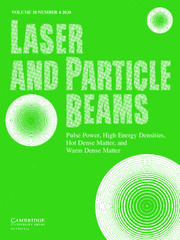Crossref Citations
This article has been cited by the following publications. This list is generated based on data provided by Crossref.
Larecki, Wieslaw
and
Banach, Zbigniew
2011.
Entropic derivation of the spectral Eddington factors.
Journal of Quantitative Spectroscopy and Radiative Transfer,
Vol. 112,
Issue. 15,
p.
2486.
Banach, Zbigniew
and
Larecki, Wieslaw
2012.
One-dimensional maximum entropy radiation hydrodynamics: three-moment theory.
Journal of Physics A: Mathematical and Theoretical,
Vol. 45,
Issue. 38,
p.
385501.
Banach, Zbigniew
and
Larecki, Wieslaw
2013.
Spectral maximum entropy hydrodynamics of fermionic radiation: a three-moment system for one-dimensional flows.
Nonlinearity,
Vol. 26,
Issue. 6,
p.
1667.
Goudon, Thierry
and
Lin, Chunjin
2013.
Analysis of theM1model: Well-posedness and diffusion asymptotics.
Journal of Mathematical Analysis and Applications,
Vol. 402,
Issue. 2,
p.
579.
McDonald, J. G.
Sachdev, J. S.
and
Groth, C. P. T.
2014.
Application of Gaussian Moment Closure to Microscale Flows with Moving Embedded Boundaries.
AIAA Journal,
Vol. 52,
Issue. 9,
p.
1839.
de Sá, L.
Chièze, J.-P.
Stehlé, C.
Hubeny, I.
Lanz, T.
and
Cayatte, V.
2019.
New insight on accretion shocks onto young stellar objects.
Astronomy & Astrophysics,
Vol. 630,
Issue. ,
p.
A84.

